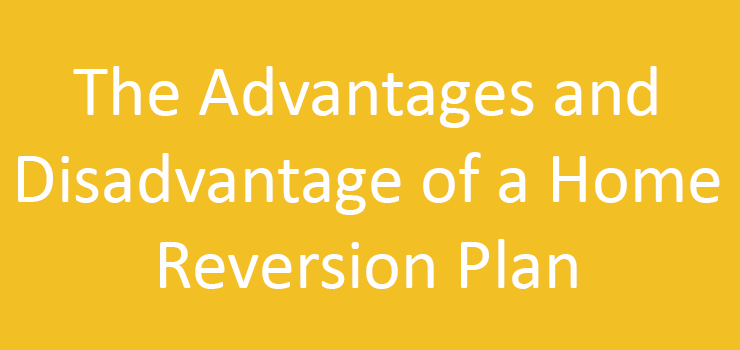If you are a pensioner who is looking for an additional source of income, you can choose to apply for a home reversion plan from one of the main providers such as Bridgewater, Aviva, or New Life Mortgages. A reversion plan makes it possible for you to sell all or a portion of your property to a home reversion company. As a result of selling your property, you will receive a lump sum cash amount, a monthly income or a combination of the two.
Why would you want to sell a part or all of your property especially in your retirement period and where would you live? Well, the money that you get from selling your property is tax free and can be used for any purpose. The home reversion company will allow you to remain in your home even if you choose to sell the entire property. You can stay in your home until you die or until you choose to move into long term care. The way this works is to sign a lifetime tenancy agreement naming every person currently living in the house to ensure they can remain after you decide to move on.
Advantages of Home Reversion Schemes
There are many other advantages of a home reversion plan. If you are 65 years or older, you can apply for a reversion plan without having to worry about repayment during your lifetime. Since you are allowed to sell a part of your property, you will benefit from any increase in the property market for the portion that you still own and you will have an inheritance to leave behind for your children or grandchildren.
A home reversion plan does have a few disadvantages. If you sell a portion of your property, you are decreasing the amount that you will leave as inheritance. If there is an increase in the property market, you will not benefit in any way for the portion that you sold. Unlike other forms of equity release, you cannot repay a reversion plan. Once you sell a portion or your entire property, it is sold.
Although it does not work like a mortgage that you repay, you are not out of options for regaining the sold portion of your home. This option does make it more difficult; however, since you still own a portion of the home you could buy back the portion of home sold. It is best to put this clause as an option to your sale agreement.
The buy-back is not advantageous to you since you are subject to fees brought about by the purchase of the home. You also have to have the value that the reversion provider is going to sell back to you. The value for the sold portion might be higher than what you originally sold it for. It does make it less ideal; however, understanding all your options is imperative before you make a decision for or against home reversion schemes.
And the Disadvantages
One of the major disadvantages of a home reversion plan is that the company will be purchasing your property for a price that is lower than the market value since you will be allowed to live in your property even though you sold it to the company.
The remaining part of the house must be sold to the same company at your death or when you decide to move out. Your children will have no choice but to sell what remains of the property. For many a disadvantage is giving up a home they raised their children and grandchildren in. For the children it also means letting go of a family home. Property values can fall during your lifetime, which lowers the inheritance remaining from the equity.
If home reversion disadvantages sound like something you can handle, then there are certainly advantages to pursuing this concept further. The money you receive for selling a portion or all of your property can be used for home improvements to keep you in your home longer as you age. You can also use the money for monthly expenses, in home care, or anything else you may require money for.
There are specific qualifications you must have to be able to take out this type of equity release scheme. The property being sold has to be your main residence. Typically, home reversion providers require your home to have no mortgage or loan on the property. If there is an outstanding lien it needs to be paid before you enter into the reversion scheme or with the funds you gain from the scheme.

